The Mirror
EditorialAboutA+a Study CentreA+a ArchiveShopClose Menu
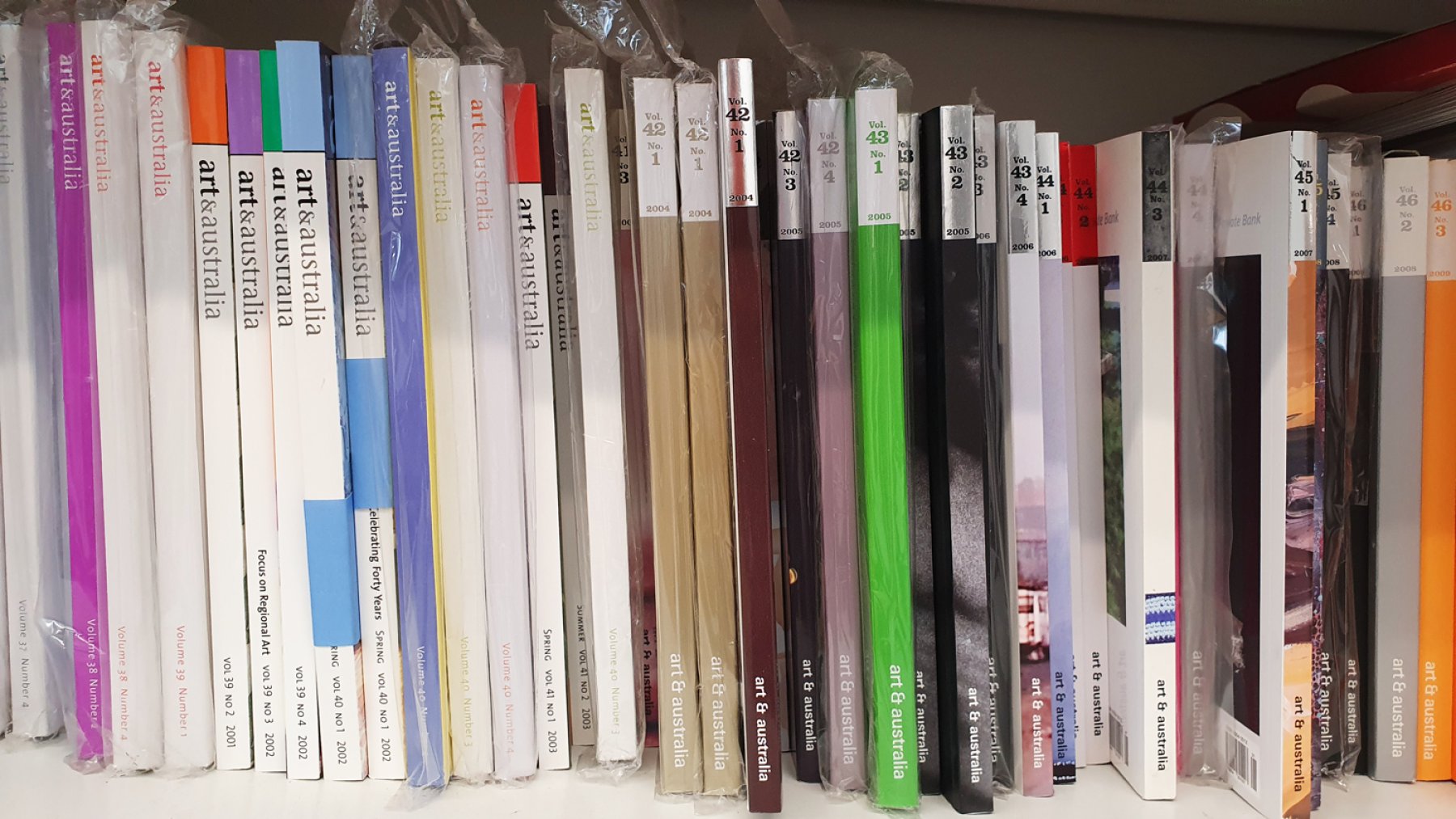
‘Translating the Art and Australia Landscape’ is a research project that responds to the Art and Australia archive (1963-present). The project occurs live and online over 2024-25 as discrete research capsules that unfold across geographies, communities and languages. ‘Translating the Art and Australia Landscape’ seeks alternative ways of seeing and speaking about art through both textual and non-textual translations of archival material that put these propositions into effect. In their responses, the contributors and collaborators of this project are re-reading or speaking back to the Art and Australia archive. Together, we are translating the landscape of Art and Australia into languages that we know, use, and believe in today.
This project was prompted by my ongoing work organising the archive for general art and art historical research, and my musings on why the Art and Australia magazine is not very well-read outside of Australia. For one, the magazine was publishing full colour plates of key artworks in public and private collections from Australia and across the world at a time before the internet. The publication would have been a fantastic resource for anyone interested in art from Australia and beyond.
While the reasons for its limited reach seem obvious—alleged provincialism, remote geography, and lack of outreach to our neighbours—these stereotypes do not hold up to any form of scrutiny. When Art in Australia (1916-1942) was rebooted in 1963 as Art and Australia by the publisher Sam Ure-Smith, a descendent of the original owner Sydney Ure-Smith, under the editorial helm of Mervyn Horton, the advisory board was geographically dispersed across several continents.1 Regular reports from Asia, Europe and North America were being published in Art and Australia. Furthermore, essays were often penned by curators in state galleries and art historians in well-respected universities. In 1993, Art and Australia initiated what is now known as the ArtAsiaPacific journal, ‘the leading English-language periodical covering contemporary art and culture from Asia, the Pacific and the Middle East.’2 In this expansion, Art and Australia (based in Sydney at the time) was publishing alongside Australian initiatives such as Asialink Arts in Melbourne and Asia Pacific Triennial in Brisbane. Whether it was in its pages, in its reach, or in its time, Art and Australia had always worked internationally, interstate and with an eye to the world.
The contributors to 'Translating the Art and Australia Landscape’ are beginning with an alternative provocation: that Art and Australia were speaking a different language. ‘Different language’, in this case, may refer to the use of the English Language. Until very recent history, English was not spoken in many parts of the world. While it is much more widespread today, this increasing hegemony is also balanced by postcolonial efforts to improve art critical scholarship outside of the Anglophone, Francophone, or Germanophone worlds. ‘Different language’ may also refer to the use of academic technical language. As a trade magazine for art in Australia, the contributors of Art and Australia may use words more familiar to art historians, critics, and dealers, or refer to artworks that were only visible on the continent. This is a familiar problem for other publications worldwide, where deeply localised content was simultaneously its strength for local punters and its greatest weakness for international and interdisciplinary reach. Finally, I understand ‘different language’ as a call for Indigenous authority. Indigenous cultures the world over know that knowledge is transmitted through speech, song, dance, sound, land, and ways other than the printed word.
We know of the very real violence wrought upon peoples everywhere by cultural imperialism. Australian art history is particularly fraught with contestations of land and Country, which continue to deeply impact our psyche more than a century after colonisation. 'Translating the Art and Australia Landscape’ is an attempt to take ‘different languages’ seriously, by imagining what art critical scholarship might look like when written text is not a priority but a simple touchstone toward knowledge production and transmission. Over the next year, this project will be publishing new and old essays about unique cultural knowledge, point toward and re-read relevant articles in the archive, and enact translations as live events on and off the Australian continent. Each capsule should provide a provisional snapshot of an alternative Australian landscape, seen from distinct geographic, linguistic and cultural positions. None of these capsules form an authoritative voice for art or Australia, this platform’s name. However, each provide valid positions for understanding and translating art, Australia, and the Art and Australia archive.


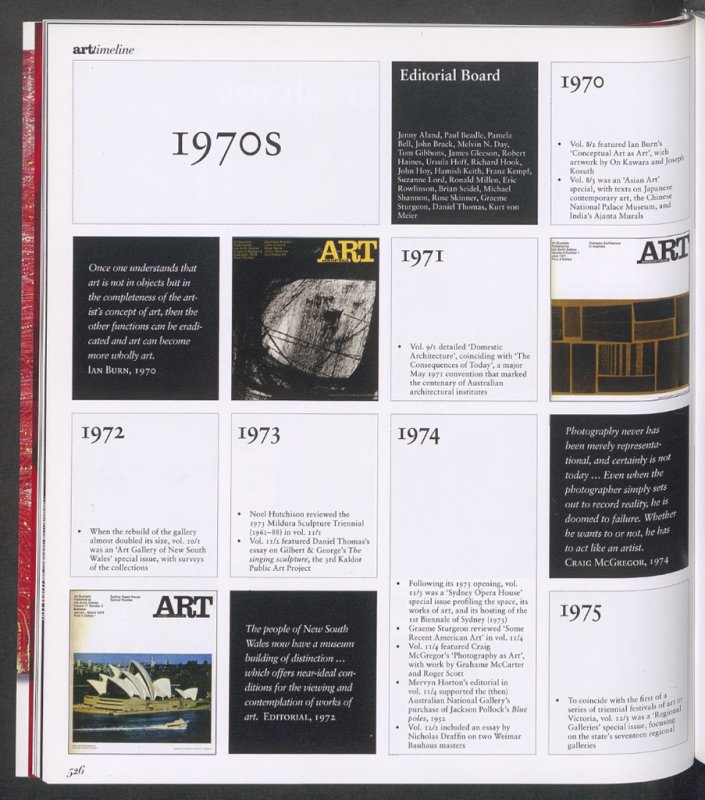
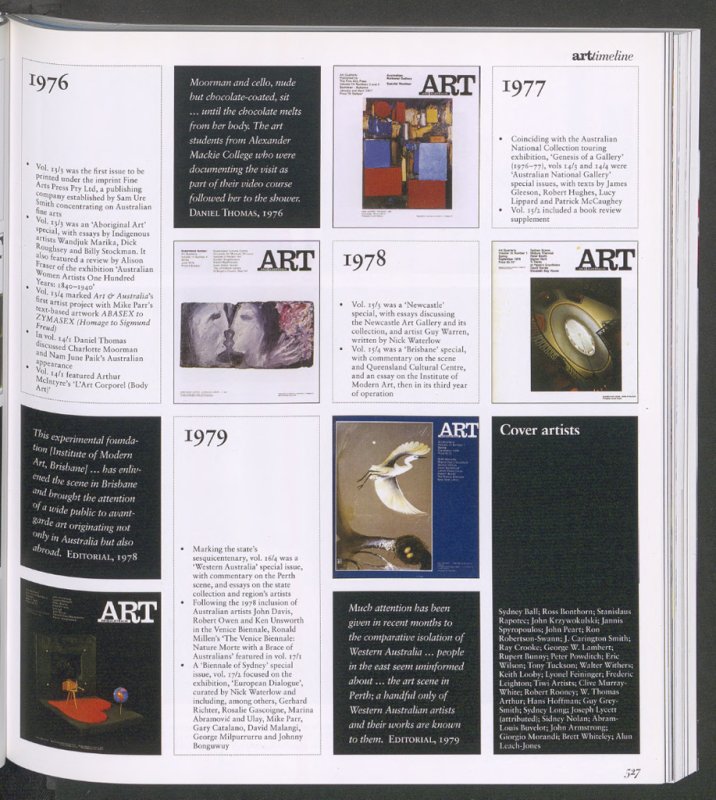

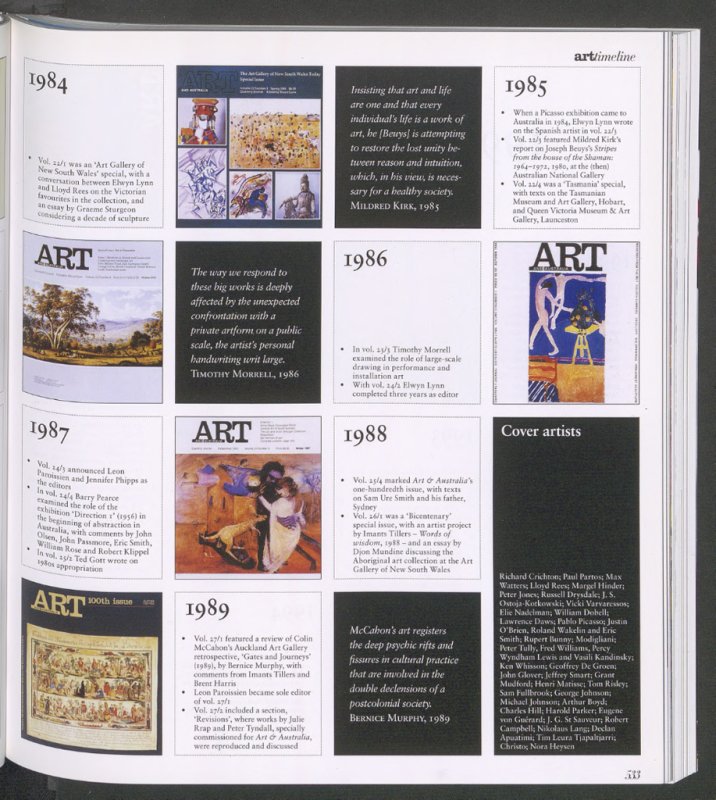
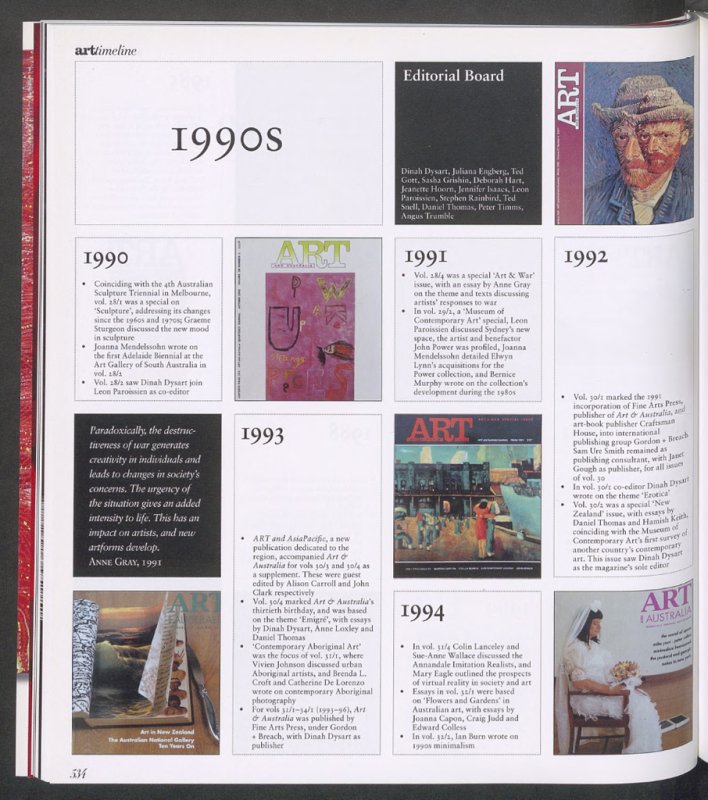

To speak in a multilingual world is to make a choice: which world(s) do we choose to engage with?
For the bakla/bading/beki/agi/bayot/baccla—local genderqueer peoples of present-day Philippines—Tagalog and the “national” language Filipino may bring about ambivalence. In 'Swardspeak: What Queering Language and Form Means to Me' Austere Rex Gamao reflects upon the tongues with which he has the most affinity: Hiligaynon and Swardspeak. Filipino may be the national language, but his mother tongue is Hiligaynon, the language spoken in his province of origin, Negros Occidental, located in the Visayas. For the Negrense, Gamao is an agi.3 Swardspeak is an ever-evolving language across the Philippine archipelago for the genderfluid peoples who construct their own form of communication. In Tagalog, Gamao should be bakla. However, he prefers to say it in Swardspeak: baccla, 'with the two soft Cs replacing the hard K. You have to say it with more flourish.'4 First published as a long-form article in English by Erika Carreon for Cordite Poetry Review, I invited Gamao to translate his text for this project. Crucially, while Swardspeak is shared by the entire beki community, Hiligaynon, Tagalog and English is not. Gamao’s translation includes all four languages, simultaneously calling in and excluding bekis and non-bekis alike. His world(s) queered ideas of fixed and singular communities.
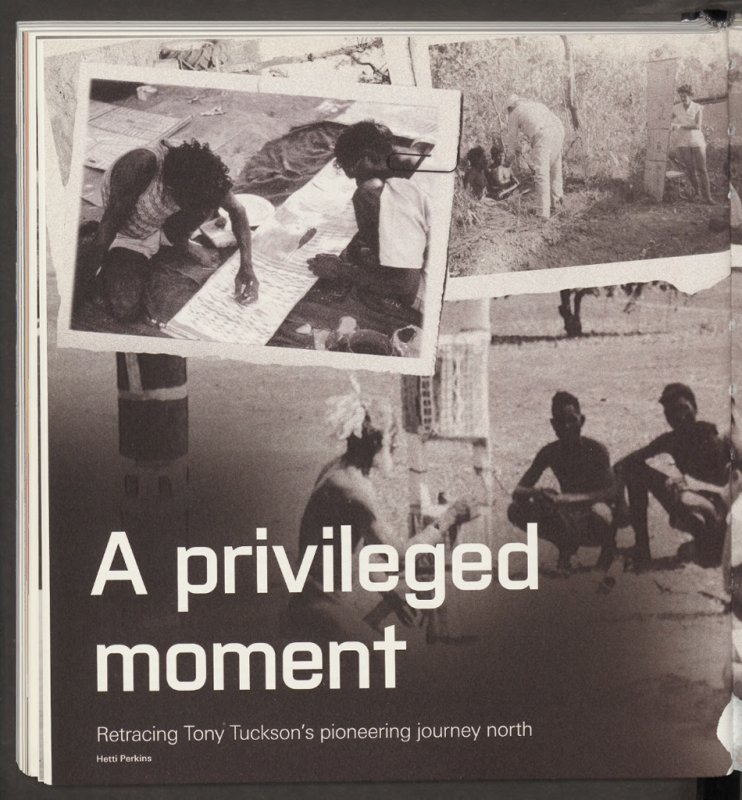

Alongside this work, Ian Rafael Ramirez was invited to respond to the Art and Australia archive. Siya has chosen to look at ‘Primitive Art Collection’ (10:1, 1972) by then Deputy Director, Art Gallery of New South Wales’s (AGNSW) and Curator of Primitive Art, J.A. Tuckson (better known as Tony Tuckson, b. 1921-d. 1973). Tuckson's article was part of a special issue produced when AGNSW opened the Captain Cook wing. 'Primitive Art Collection’ was a position statement on the artwork to be collected including art from 'Australia, islands of the Pacific Ocean from Hawaii to New Guinea and some parts of Indonesia, Negro Africa south of the Sahara, North America and particular areas of Asia'. Tuckson highlights how 'many of the objects are made with skill and feeling, that they should be seen in art museums as well as museums of ethnology'.5 Ian, alongside their many other bekis peers, respond to Tuckson's article from a contemporary position. They highlight the 'makapa-insulto nga meaning', or insult, implied by the term 'primitive'. They also discuss the role of Dr Stuart Scougall, especially his financial contribution to Pukumani grave posts (1958), seventeen grave posts (tutini) by the Timi people of Melville Island. Hetti Perkins, in a 2007 interview with Mrs. Margaret Tuckson (b. 1921-d.2014), will call this commission as having 'changed the future of the gallery's presentation and opened up an ongoing dialogue between the institution and Indigenous artists and their work.'6 The bekis have never read Art and Australia, and view Tuckson’s work with fresh eyes. They talk back and demand more of Tuckson who, while pivotal, continued to betray 1972 biases in his choice of words.
In February 2024, the Mga Baklang Kanal, a group of twelve bakla performers, further translated this text in a live performance held in Manila, the Philippines. This event was organised in collaboration with the University of Philippines Diliman Department of Speech Communication and Theatre Arts, UP History Department, and De La Salle University.
On 11 March 2023, the last remaining Paiwan Ravar master flautist, Pairang Pavavaljung, passed away. He was 88 years old. Pairang is survived in blood by four children, Sakuliu Pavavalung, Uai Pavavalung, Etan Pavavalung, and Legeai Pavavalung, and multiple grandchildren. He is survived in sound by Ravar, Taiwanese, and Amerika, or non-Taiwanese, students all over the world.

In 'Vale Pairang Pavavaljung (b. 1935 – d. 2023): The Ravar Paiwan Flute and its place in Paridrayan', Amerika Jarrod Sim, one of Pairang’s last students, recounts his time with the master. Classically trained, Sim had initially approached his studies with the detachment of Western music: 'The average key signature of Ravar flutes resemble the western diatonic scale of F, although the scale does not follow the equal temperament tuning system.'7 He soon contradicts himself when describing the lalingedan (double-piped nose-flute or double-piped mouth-flute) he borrowed from Pairang: the borrowed lalingedan resembled the western diatonic scale of G. Forms of aural discernment familiar to the Western-trained scholar were irrelevant in this landscape when even the instruments handmade by the recognised master do not reflect standardised, western ideas of instrumentation or notation. Sim describes an instance early on in his flute studies: when attempting to move away from the loud tempo of tropical rain, Pairang advised against it. To do so was to make the flute less “authentic (自然),” as the Ravar lalingedan (double-piped nose-flute) is meant to fit in the natural soundscape. The lalingedan reflects and supports the spirit of place and should never be removed from the physical environment. Following on this principle the landscape itself, from a Paiwanese perspective, was the first lalingedan. We are only its pakulalu (accompanying harmoniser).
Alongside Sim’s new research, I have chosen to highlight and translate 'Saltwater Country'(2001) by the eminent British Australian anthropologist Howard Morphy.8 Morphy’s article is about quite a different Indigenous community, the Yolŋu of eastern Arnhem Land. His article describes how song, sacred names, objects, and paintings are used to negotiate between Wangarr (ancestral dimension) and the present, and its visual manifestation in the Saltwater Collection of bark paintings. As Sim’s PhD supervisor, Morphy’s methodological approach had clearly influenced Sim, as this article's resonant reflections on place-based identity and belonging indicate. The methodological approach Morphy refined with the Yolŋu had been translated by Sim to a study of the Paiwan Ravar, the tribe that had, in the mid-twentieth century, adopted his maternal grandmother. Reading Sim and Morphy's articles side-by-side it is clear that Sim was Morphy’s student, and further, that the Taiwan landscape was distinct from the Australian. Here, in Sim's translation of Morphy's methodology was enacted through its application to an alternate, place, people and cultural practice.
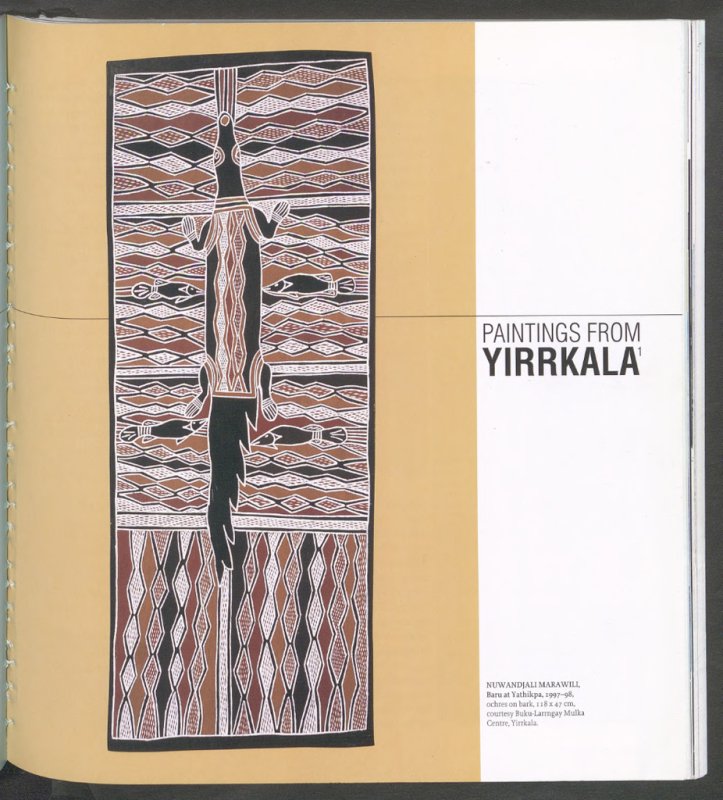
The textual translations for this capsule are deliberately experimental. There are two main reasons. First, as Sim’s article indicates, the Paiwan worldview prioritised sound: Pairang did it best in his contemporary translation of Paridrayan’s founding myth from spoken word to flute. Etan further offered this story as a poem. Both examples of ancestral listening are included in this capsule. Second, where prevailing sentiment in Australia may expect translation to Paiwanese, this idea was strongly resisted by the community. Everyone Sim and I approached felt it was inappropriate because of linguistic challenges, reach, and readability.
While the Paridrayan community may have the strongest linguistic tradition for Paiwanese, this language had a distinct grammatical structure from both Mandarin Chinese, lingua franca of Taiwan, and English. Further, the language differed by tribe, village, clan, and social position. There is no standardised Paiwanese, neither does it have an agreed-upon written form. Finally, recognising the written form as the non-Paiwanese way, they preferred essays that reach out to actual readers: in English and Mandarin Chinese. Keeping these concerns in mind, we invited Jason Lee to translate articles from English to Mandarin. His translation, which benefitted from the editorial support of Erxuan Xu and Etan Pavavalung, reflects vernacular Taiwanese Mandarin spoken in contemporary Paridrayan, as we understood it. Keeping in mind the customs in Taiwan, especially in South Taiwan and among the Paiwan Ravar, Lee’s translations use the Minguo, not the Gregorian calendar, shifting the worldview through time itself. Further, in response to the phonetic limitations of Mandarin and hanzi script for the Paiwanese language, key terms introduced in-text are written in the roman alphabet throughout.9 The same principles are applied to Yolŋu words, where a phonetic guide is provided first before the roman alphabet is used. These are not principles typically used in formal Taiwan-born texts. While these two essays do retain the primary content of the original, Lee’s translations reflect what the editorial team believe would be accessible to Paridrayan residents.
In October 2024, Art + Australia and the Taiwanese government will support seven members of Etan Creative Vision Art Studio for a two-week residency in Naarm Melbourne. During their time in Naarm, they are looking to share their sound through seminars, workshops, exhibition, installation, or other forms of exchange.
1. Sydney: James Gleeson, Robert Haines, Leonard Hessing, John Olsen; Melbourne: John Brack, Ursula Hoff; Brisbane: Laurie Thomas; Adelaide: Kym Bonython; Perth: T. H. Gibbons, Guy Grey-Smith, Rose Skinner; New Zealand: Yuji Abe, K. Okamoto, Chisaburch F. Yamada; USA: Fred Martin, Henry A. Stroud; Europe: Ronald Millen. From mid-1964, there were also two advisory members for New Zealand: Paul Beadle, Hamish Keith.
2. https://artasiapacific.com/about
3. For genderqueer peoples in present-day Philippines, their identities often remain elusive. In reviewing this text, Erika Carreon remarked: 'Bakla is tricky/too slippery to be easily classified or reduced as a "third gender" the way Western gender discourse usually defines it, because it contains both gender and sexuality. There are many baklas who do not regard themselves as different from cisgender men, for example, and simply define kabaklaan as homosexeuality. There are baklas who identify themselves with the label as a marker of gender expression. Straight folks also use it derogatorily to mean effeminate, regardless of whether or not the person being insulted regards themselves as differently gendered or not, so there's also that dimension to it.' See also Jaya Jacobo. 'The bakla, the agi: our genders which are not one', Journal Periferas, https://revistaperiferias.org/en/materia/the-bakla-the-agi-our-genders-which-are-not-one/.
4. See Austere’s article in this collection.
5. J.A. Tuckson, “Primitive Art Collection”, ART and Australia, June 1972, p. 77. By the time of the article, Tuckson was already gravely ill and was not able to visit the new gallery. He will pass from cancer a year later, in November 1973.
6. Hetti Perkins, “A Privileged Moment: Retracing Tony Tuckson’s Pioneering Journey North”, art & Australia, September 2009, p. 110.
7. See Jarrod’s article in this project.
8. First published in ART and Australia, Vol 38 (3) (2001)
9. As an example of the phonetic limitations in Chinese for Paiwanese, Pairang had introduced his song, Milimilingan, with a rolled ‘R’ sound (i.e. Mi-ri-mi-ring-gan) to Jarrod Sim. However, Sinicization had removed this sound from the repertoire of younger Paiwanese.
Editorial: Translating The Art And Australia Landscape : Chloe Ho
Chloe Ho. “Editorial: Translating The Art And Australia Landscape.” Art and Australia.com https://artandaustralia.com/A__A/pp204/editorial-translating-the-art-and-australia-landscape